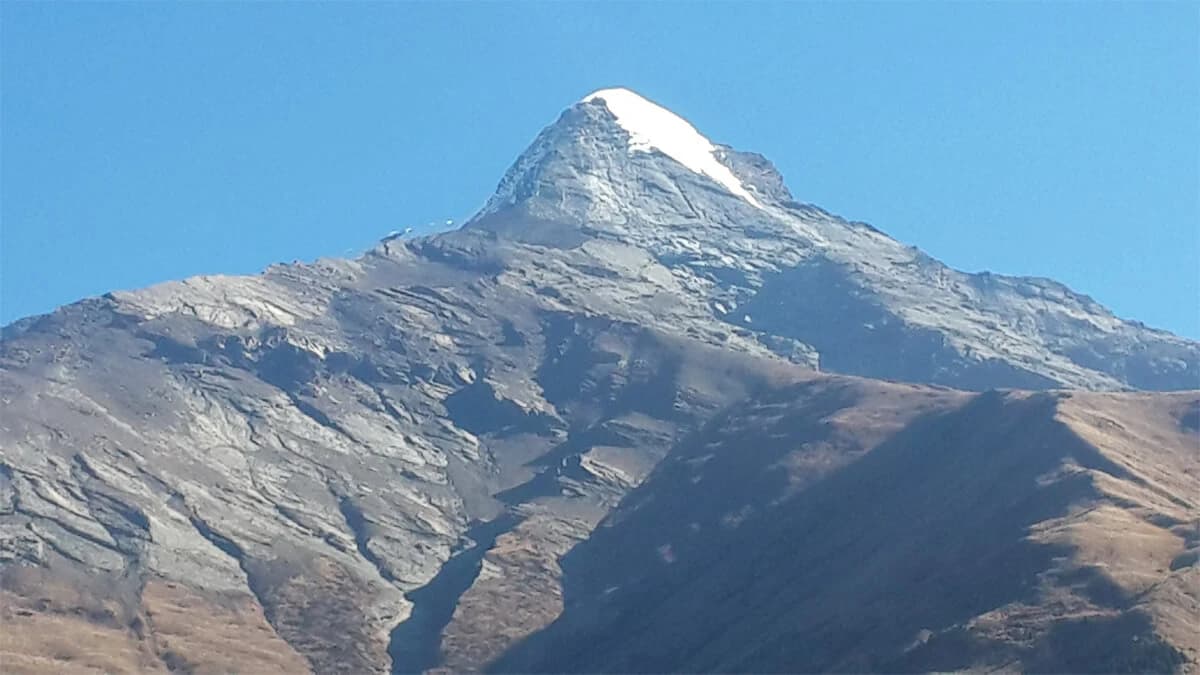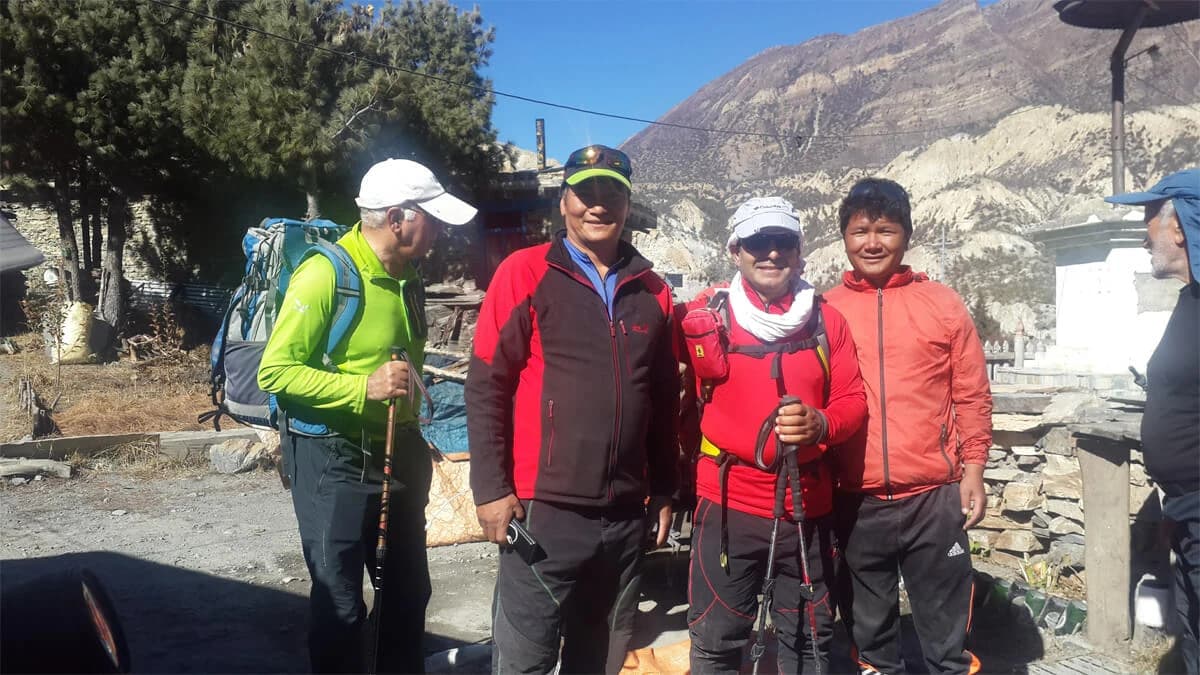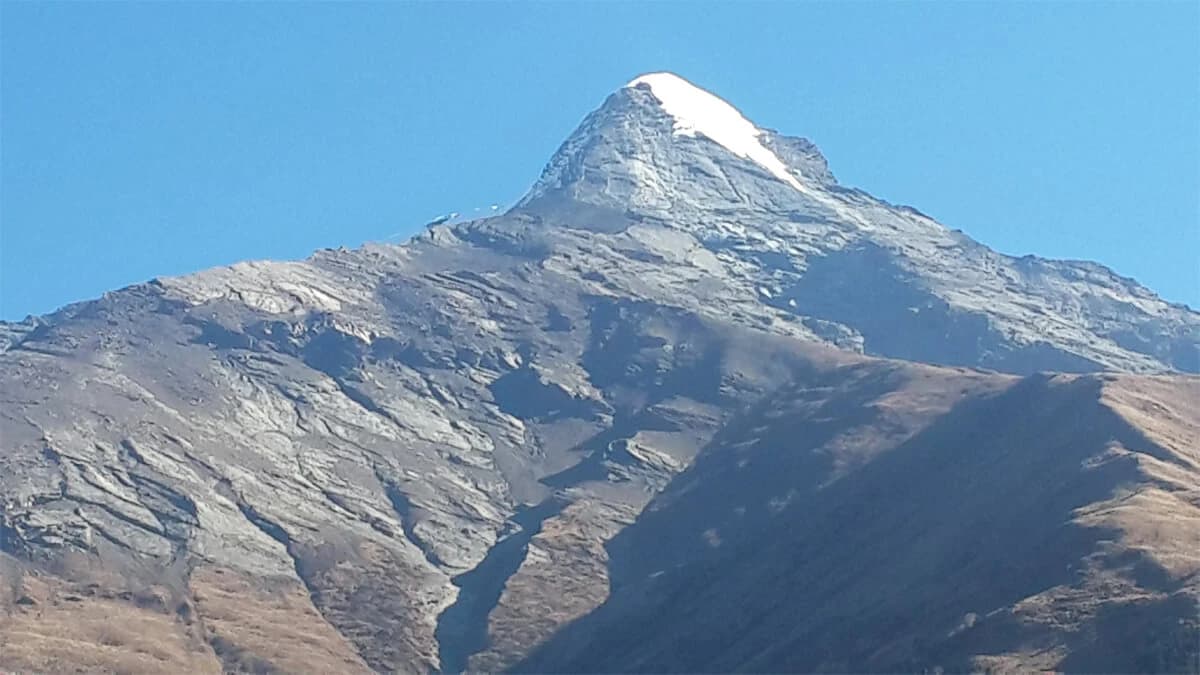Pisang Peak Climbing Overview
Pisang Peak Climbing is an adventurous journey towards the Annapurna Circuit trek. Pisang Peak (6,091 m) is located in the beautiful Manang Valley. It is one of the 1,310 trekking peaks in Nepal. It is one of the most climbed peaks because it is non-technical and less difficult than others.
Annapurna Circuit trek is often combined with this peak climbing in Nepal. Generally, after you climb this peak, you trek to Muktinath via Thorung La Pass (5,416 m). In this tailor-made trip, you can do peak climbing, the Thorung La Pass trek and the Muktinath trek, all at once!
As this lies in the Annapurna Conservation Area Project (ACAP), you will have glimpses of birds and animals during the walks. If you travel in spring, the colorful rhododendron flowers embellish the entire region.
The ethnic villages of Gurung, Thakali, and Manangese are equally beautiful cultural attractions of this journey. You will witness their lifestyle, culture, and tradition as well as taste their typical food items. The Thakali dish (Nepali meal) is a unique brand of meal in this route.
Pisang Peak climbing lets you have the wonderful scenery of the snow-capped peaks of Annapurna Massif and Dhaulagiri Massif. Ganesh Himal (7,422 m), Tibetan Plateaus, Kang Guru Peak (6,981 m), Gyaji Kang Peak (7,074 m), Larkya Peak (6,249 m), Annapurna (8,091 m) Range, Chulu East (6,584 m), Chulu Far East (6,059 m) and Tilicho Peak (7,134 m), Lamjung Himal (7,134 m), Annapurna Ii (7,937 m), etc. Are the peaks seen during this trip.
After visiting Muktinath Temple, you will fly to Pokhara where you will explore the most beautiful places. Additionally, you can also try some adventure sports like boating on the Phewa Lake, zip flying, paragliding in Nepal, and hot air ballooning in Pokhara as well.
Pisang Peak Climbing Highlights
- Thakali and Manangese villages of the Manang Valley
- Breathtaking view of the Himalayas including Annapurna (8,091m) and Dhaulagiri (8,167m) Massifs
- Biodiversity of Annapurna Conservation Area Project
- Going across Thorung La Pass (5,416m)
- Pilgrimage to Muktinath Temple
- Apple's production of the Mustang
- Pokhara-Jomsom scenic flight
- Pokhara City excursion
Pisang Peak Climbing Itinerary
Pisang Peak climbing itinerary goes to be at least 10 days. You can plan only for climbing Pisang Peak (6,091 m) or extend it to Thorung La Pass trek. Doing this with the Annapurna Circuit trek makes this trip even longer.
To book the right duration for this peak climbing, you must be sure of what you want to do on this Nepal visit. Similarly, at least 1 day should be managed as a contingency because if the weather remains unfavorable, it is hard to climb the peak. Moreover, Pisang Peak is higher than 6,000 m, and is always tricky to ascend to the top.
Likewise, if you are a beginner trekker or don’t have previous experience of trekking in Nepal, you need some more days for training. To learn how to use climbing gears and some key techniques of peak climbing, you must prepare yourself first. In this way, the Pisang Peak climbing itinerary becomes different on the conditions applied.
Pisang Peak Climbing Cost
Pisang Peak climbing cost is different in different situations. The cost of this trip depends upon the duration, services, mode of transportation, and climbing gear. Doing only this peak climbing needs a short duration while Annapurna Circuit Pisang Peak climbing needs some more days. The cost of a short trip differs from that of a long trip!
For Pisang Peak climbing, you must do both tea house and camping trekking in Nepal. You have to spend 3 days in a tented camp whereas other days in hotels and lodges. Annapurna Circuit Trek is popular for more than basic facilities of food and accommodation. You find a large variety of cuisines in the menu of the hotels and lodges. Similarly, the rooms are from basic to deluxe. For basic services, the cost is low but for deluxe services, the cost is automatically high.
Although non-technical, you require climbing gear for Pisang Peak climbing. You can either buy all the climbing gear or get some on hire as well. The cost of purchasing is higher than hiring them.
Likewise, to reach Pisang, you can either drive directly from Kathmandu or fly to Pokhara and then drive there. The next option, after completing this Nepal trekking trip, is to fly from Jomsom to Pokhara or use a roadway vehicle to drive there. Using either of the modes of transportation influences the cost of Pisang Peak climbing.
The most important is the cost of peak climbing in Nepal, which directly affects the overall cost. Peak climbing permit costs is different in different seasons. In spring, it costs $250; in autumn, $125 while in winter and summer, the cost is only $75 per permit climber!
Therefore, to know about the actual cost of Pisang Peak climbing, you must be sure about the season you trek, duration, services and mode of transportation you use. Nepal Trekking Routes is always waiting for you to help plan the right trip at the right price. Don’t hesitate to contact us via email, phone call, WhatsApp or online booking facilities on our website
Pisang Peak Climbing Difficulty
To know about Pisang Peak's climbing difficulty, we should consider some major factors determining climbing difficulty. At first, Pisang Peak (6,091 m) is a non-technical peak. However, you have to go across some gorges, which are quite tricky.
More than this, as the journey from High Camp to the Pisang Peak Summit is done after midnight, it may be a little difficult. You have to depend upon the light of the head torch to walk along the icy/slippery trail. It is not less challenging after all.
In winter, the heavy snowfall and sudden change in weather may appear as a hurdle to move higher. In addition, Pisang Peak climbing in summer is also a difficult as the rainfall increases the chance of a glacial flood as well.
To beat and prevent these possible factors from raising to the difficulty of Pisang Peak climbing, you must book this trip with a local tour operator. The local tour operator has better knowledge about these challenges and the ways to beat them at. Among such agencies, Nepal Trekking Route is the one having a long experience of Nepal tours, trekking in Nepal, and peak climbing in Nepal. We provide all the safety measures and a Sherpa guide as the team leader because you know, your safety is our first motto!



